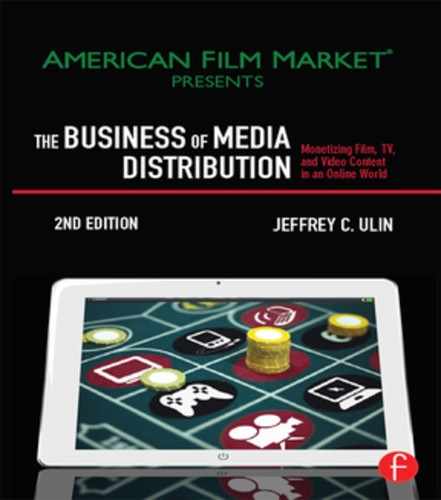Corporate Vice President Media & Entertainment Group, Microsoft
The Business of Media Distribution is an important book for anyone who wants to understand how all the key pieces of the entertainment distribution ecosystem work.
The economics of the entertainment industry was already challenging enough historically to appreciate because it involved a web of separate but related ecosystems, including film, TV, video, merchandising, and a variety of other ancillaries.
Today, the complexity is exponentially greater. Changes are precipitated by the evolving digital and online technologies. Jeff has been able to cogently pull together issues relating to legal concerns, economics, technology, supply chain organization, and management that cut across creative goods, software, and distribution platforms.
I am reminded of the scene in the original Jurassic Park, when the characters are breathlessly trying to escape a charging Tyrannosaurus rex, chasing their SUV. The camera shows the T. rex in the side mirror and the conspicuous words “objects in mirror are closer than they appear.” Paraphrasing, “the evolution of media today, from analog to digital, is far more complicated and daunting than it appears from a distance.” Jeff’s book is an essential read—to ensure you are not caught off guard. Jeff’s book ensures you are not doing a “Shoulda, woulda, coulda” when it comes to making key decisions.
I have known and worked with Jeff for more than 20 years, both when he was at Lucasfilm and as a colleague when I was at Universal in the home entertainment division and headed Universal Television and Jeff was a senior executive at Universal’s international home video joint venture (co-owned by Paramount Pictures).
For anyone in the day-to-day entertainment business, or the periphery, who is directly or indirectly tasked with managing video-based intellectual property, this book is a must-read. If you are a student, and are looking for a primer on the business, or a media executive who wants to better understand what that division across two buildings away does, and how it relates to you, this book is for you. The book is helpful to a wide range of groups because it pulls together theory and practice in a unique fashion, providing readers a history lesson of the market’s evolution. And for anyone generally interested in how networks and studios make money—and put money at risk—from the TV shows and movies they produce, and the novel challenges they are facing today, this book will give you a unique overview—and even give you a glimpse into the future.
Going beyond the basic markets, though, Jeff then turns to how technology has disrupted traditional distribution channels, and how areas that were once secure and the lifeblood of the industry are under attack and could even disappear. As areas converge, access to content becomes more ubiquitous, and Internet-enabled devices allow users to consume content when, where, and how they want it, we all need to be smarter. Five years ago, the most daunting impediment was technology—how the content was stored, managed, and delivered. The challenge for nearly everyone involved in media is the business model—and how to migrate from fixating on the “way we used to make money” to the unchartered waters of changes in windowing, rental-supplanting sell-through, subscription services, cord-shaving, “cord-nevers,” over-the-top streaming—and the list goes on.
When I testified at a U.S. Senate Commerce Committee hearing on the “future of video” in the spring of 2012, I commented that there would be more changes in the television landscape in the next 18 months than the past five years. I believe that now as much as I did then. We are witnessing warp-speed changes in consumer content consumption habits, spending patterns, and demand for access to content by any means or device. The common refrain “the consumer is in charge” is spot on. Just as all of us became online travel agents and American Airlines’ Sabre booking system had a near-monopoly on travel reservations, programming networks’ chokehold on what and when you watch is quickly fading away. In 2011, theater attendance for feature films was the lowest in 16 years. All of this leads to change. Whether it is a DVR, VOD, cable programming, content you purchase, rent, or can access at no cost, coupled with millions of choices versus a few dozen during prime time just 10 years ago, working in media and managing revenues is not for the faint-hearted—or inexperienced. Jeff’s book provides excellent insights and real-world observations on how change is a threat if you do not act, but also opens the door to vast opportunities if you make smart, informed, and expeditious decisions.
